Science
LETS GET TECHY!
We had to let the health fanatic scientists have their say. After all, without them we would just be another traditional chocolate company. We hope your eyes don’t glaze over with all the technical mumbo jumbo here. They just keep creating more and more! Innocent Chocolate™ has always been Earth’s Healthiest Chocolate,™ a true functional food with serious health benefits, and that all comes from those innovative science types who now get to share some tech jargon with you here, so you know just how serious this stuff is. Science is at the heart of Innocent Chocolate’s work to protect and improve your health and have food you can trust that still tastes chocolicious!
Far more than just providing you lots of tasty chocolate products, Innocent Chocolate™ is a deep science-based company using advanced food science technology including nano inclusion complexes, micro emulsions, and lipid-based nanoparticles (really tiny food particles) to deliver high potency bioactives. Bioactives means “biologically active” and in this case refers to all natural plant extracts that have an impact on our bodies. Using all sorts of cool science, we make them more active and more effective, and we do this with smaller amounts so they are even safer.
From all this work we have developed our own unique Intellectual Property. We won’t reveal our deepest dark chocolate secrets, but we will share some well-established science that we’re using so you get an idea what we’re up to.
WHAT'S THE BIG DEAL ABOUT SOMETHING SO SMALL?
Nanotechnology (NT) has been described as the science of the very small. Nano is defined as a unit prefix meaning “one billionth”. Yes, one billionth. That’s extremely small. NT has broad applications, from industrial, to medical, as well as right in our favorite area, food science. There is sometimes confusion about how NT can be used in the food industry when it’s also used in industrial processes. Is that safe? Absolutely. As they say, NT is the science of the very small. When that comes to food it means tiny particles that are digested and absorbed in a different way by your body. Our products use NT to ensure maximum absorption of the nutrients while keeping it super yummy for you. The human body is already used to dealing with nanoscale food. Our guts break down what we eat into nano-sized particles so that the body can absorb nutrients in the intestine. Typically, we have what are called macronutrients (big) and micronutrients (small).
MAKING NANO MAGIC
Now we have nano sized (really small). When things like vitamins, minerals, and plant bioactives are consumed they may only be digested and absorbed to a limited degree. For example, the recommended dosage of an herbal extract may be 200 mg. From the 200 mg, only 80 mg may be absorbed, the rest being broken down during digestion or simply excreted. When we talk about how much of some nutrient is being absorbed by the body, it is about bioavailability, which means how much of a given nutrient is available for the body to digest. All nutrients have different levels of bioavailability, which can also be impacted by gut health (gut flora/microbiome), age, genetics, and more. By reducing particles to nano size, and using NT to deliver them, we substantially increase bioavailability.
When that same herbal extract from our example above is reduced to a very small size and put inside special carriers such as structures called Inclusion Complexes, or Solid Lipid Nanoparticles (SLNs), then the absorption can increase substantially, sometimes to 90% or more. This is increased bioavailability. Because the absorption is much greater, we can ingest less, which can mean lower toxicity.
Remember, even an aspirin can put a toxic load on our organs. Further, because these special carriers hold the materials, you don’t taste them. A lot of herbs and plant bioactives have bitter and noxious tastes due to the alkaloids and other active components. We use NT to mask these bad tastes so we can still deliver an effective dose of the compound without you tasting it.
NT in foods is not new. It began seeing use in the food and pharmaceutical industry in the mid-1990s. There has been a lot of research and new developments since then, including safety research. There are certainly nanoparticles that are not good for our bodies, most of which may not be intentionally ingested or meant for ingestion such as tiny particles of metals from processing. None of those are in our products.
OUR TECHY CHOCOLATE
In our case, we are using well established methods with a history of safety, such as cyclodextrins (Alpha, Beta, Gamma) which are also called inclusion complexes when a compound is put inside them. We are using only all natural ingredients including a wide variety of plant/herbal bioactives, plant lipids, and plant-based emulsifiers. These are all things that are regularly found in foods, we are just applying NT to increase bioavailability, hide bad tastes, and decrease the overall amount needed for you to get the maximum benefit.
The USDA has a broad category of foods and ingredients called GRAS (Generally Regarded As Safe) which basically means the ingredient has been shown to be safe after long term use and no evidence to the contrary has been presented. Cyclodextrins are in the GRAS category, as are all of the ingredients we use. We also use microemulsions and liposomal nanocomplexes. These are methods of combining bioactives with lipids (fats) in such a way that the lipids surround the bioactives on a nano scale and allow them to be ingested without the taste, and to also have greater bioavailability (more impact with less compound)
We hope this gives you a good idea of what our products are really all about and how they can provide big benefits to your health by applying the science of the very small. We will be adding new and exciting products every few months, with new twists on our techy approach, all to keep you healthier while still getting you chocolate fix. As we say: Indulge, without the Bulge!
Below are a few articles for those who dare, and want to read the sleep inducing deep science on some of what we do. Have fun!
Effect of Surfactant Concentrations on Physicochemical Properties and Functionality of Curcumin Nanoemulsions Under Conditions Relevant to Commercial Utilization
DOWNLOAD PDF
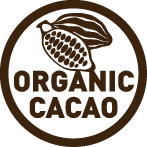
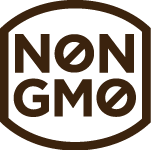

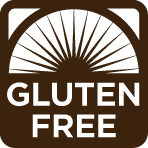


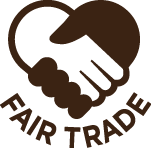
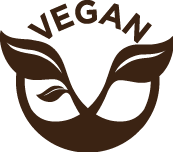
Innocent Chocolate
© Copyright 2025 Innocent Chocolate. ALL RIGHTS RESERVED.